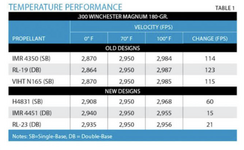So Im loading for 4 calibers now and have some good hunting loads but my ES is not that great generally about 50fps give or take. Im really meticulous with my method and using good components so Im not certain what else to do to improve my ES. Before anyone starts suggesting trying a new component, Ive done that and am pretty much done with splurging hundreds of dollars on some 'other' hard to find powder or primer. I need to learn to load what I got at this point.
Ive read somewhere that if your ES sucks your method is inconsistent. I searched for what a "good ES" is in loading blogs and its subjective like most things and spread out as bad as my ES is... lol. Generally anything under 25fps is "really good", ammo thats under 50fps is "pretty good"...
Obviously a single digit ES is ideal, but what is a max acceptable ES to strive for?
And what are some method techniques to improve ES?
Ive read somewhere that if your ES sucks your method is inconsistent. I searched for what a "good ES" is in loading blogs and its subjective like most things and spread out as bad as my ES is... lol. Generally anything under 25fps is "really good", ammo thats under 50fps is "pretty good"...
Obviously a single digit ES is ideal, but what is a max acceptable ES to strive for?
And what are some method techniques to improve ES?













